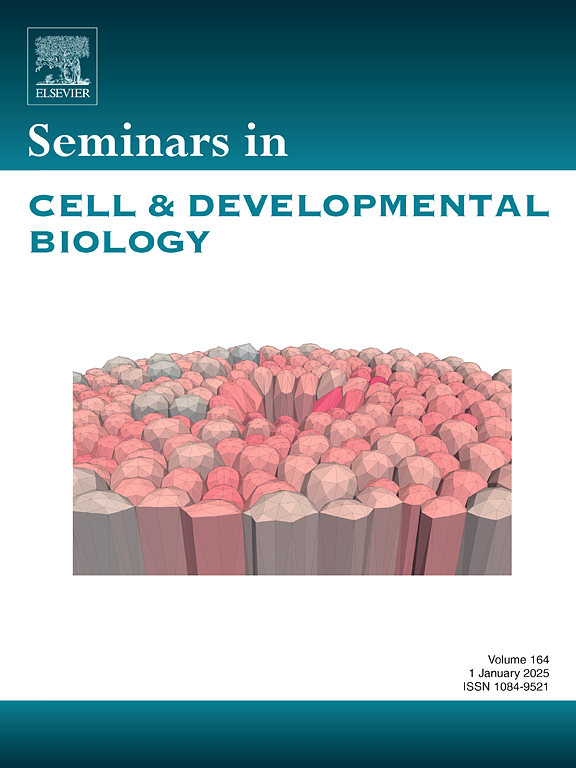生物物理,细胞和小鼠模型方法来研究卵泡发生的机械调节
IF 6
2区 生物学
Q1 CELL BIOLOGY
引用次数: 0
摘要
卵泡发生是指卵巢卵泡发育以支持卵子发生和激素产生的过程,对女性生育能力至关重要。虽然调节卵泡发生的激素和生化信号通路已被广泛研究,但越来越多的证据表明卵巢内的机械信号也起着关键作用。卵巢由卵泡、黄体和基质组成,每一个组成的生物力学微环境都可能在整个生殖周期中发生变化。此外,卵巢的空间组织,胶原蛋白丰富的皮层和柔软的髓质,可能影响卵泡的激活和生长。本文结合目前关于卵巢结构、细胞外基质组成和机械转导途径的知识,探讨了卵巢的机械特性调节卵泡发生的假设。我们重点介绍了支持卵泡发生机械调节的最新发现,讨论了相互矛盾的数据,并描述了用于研究这一概念的工具和模型。通过考虑机械力以及激素和生化信号,我们提出了一个更综合的卵泡发育控制因素的观点,这对理解卵巢生理和病理具有重要意义。本文章由计算机程序翻译,如有差异,请以英文原文为准。
Biophysical, cellular, and mouse model approaches to investigate the mechanical regulation of folliculogenesis
Folliculogenesis, which is the process by which ovarian follicles develop to support oogenesis and hormone production, is essential for female fertility. Although hormonal and biochemical signaling pathways regulating folliculogenesis have been extensively studied, increasing evidence suggests that mechanical cues within the ovary also play a critical role. The ovary is composed of follicles, corpora lutea, and stroma, each contributing to a biomechanical microenvironment that might change across the reproductive lifespan. Additionally, the spatial organization of the ovary, with a collagen-rich cortex and a softer medulla, may influence follicle activation and growth. This review explores the hypothesis that mechanical properties of the ovary regulate folliculogenesis, integrating current knowledge on ovarian architecture, extracellular matrix composition, and mechanotransduction pathways. We highlight recent findings supporting mechanical regulation of folliculogenesis, discuss contradictory data, and describe the tools and models used to investigate this concept. By considering mechanical forces alongside hormonal and biochemical signals, we propose a more integrated view of the factors governing follicle development, with implications for understanding ovarian physiology and pathology.
求助全文
通过发布文献求助,成功后即可免费获取论文全文。
去求助
来源期刊
CiteScore
15.10
自引率
1.40%
发文量
310
审稿时长
9.1 weeks
期刊介绍:
Seminars in Cell and Developmental Biology is a review journal dedicated to keeping scientists informed of developments in the field of molecular cell and developmental biology, on a topic by topic basis. Each issue is thematic in approach, devoted to an important topic of interest to cell and developmental biologists, focusing on the latest advances and their specific implications.
The aim of each issue is to provide a coordinated, readable, and lively review of a selected area, published rapidly to ensure currency.

 求助内容:
求助内容: 应助结果提醒方式:
应助结果提醒方式:


